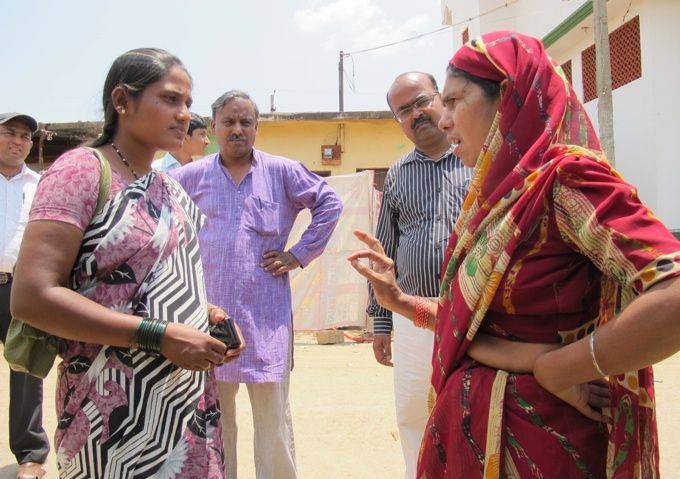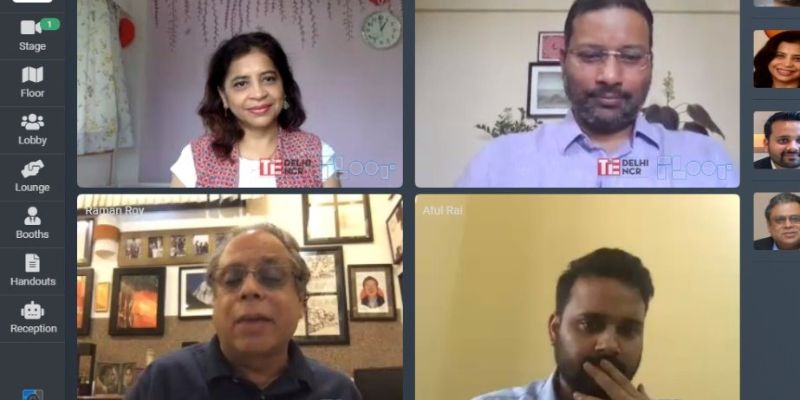MicroGraam: Partnering with India’s Rural Poor to Overcome Poverty
The article has been reblogged from Mahindra Rise. If you have a great idea and need a platform to showcase, please submit your idea for Spark The Rise- and get your project funded.
India’s economy may be on the rise, but for the 37% of the Indians living below the poverty line, many basic services are out of their reach. In February 2010, Dr. Rangan Varadan, a former head of banking and capital market vertical at Infosys, and Dr. Sekhar Sarukkai, a successful serial entrepreneur, started MicroGraam to help combat this. By offering an online peer-to-peer lending platform, MicroGraam connects deserving students, entrepreneurs, and farmers in rural India with the resources and funds to overcome the myriad obstacles they face.

MicroGraam allows underprivileged entrepreneurs, students, and farmers in India to get loans from urban professionals, who are able to offer much more flexible loan terms than conventional microfinance models by crowdsourcing to raise funds for borrowers. On MicroGraam’s website, lenders can easily choose a borrower, the interest rate, and make an investment. Then, in 12-18 months, the borrowers pay back the loan to the investor, who can then choose to lend again or keep their investment.
To ensure that money is going to the right places, MicroGraam works with 23 NGOs in rural areas to identify deserving and credit-worthy borrowers, who need loans for productive purposes, such as education, farming or entrepreneurship.

Rethinking Poverty:
Dr. Varadan and Dr.Sarukkai’s idea was to treat borrowers as equal partners in the lending process. Loans were designed to cater to the cash flow needs of rural borrowers. For example, for farming loans, there is no repayment required during the first three months. In addition, MicroGraam has set up an interest rate negotiation process with complete transparency on all elements of the loan term: the amount, duration, intermediary fees, interest rate earned by the lender, and the total interest rate paid by the borrower.
Dr. Sarukkai says, “Think of MicroGraam as the ‘eBay’ of microfinance. MicroGraam shifts the power away from investors who could traditionally demand any interest, and towards an open marketplace with a balanced representation from all parties involved in the microfinancing ecosystem.”
MicroGraam’s success stories speak for themselves.
Anurada is from Uttar Kannada district, where her family of 6 lived off of a yearly income of Rs 14,000. She used her MicroGraam loans to complete an employability training program and as a result was hired by First American Financial Corporation. She now earns Rs 13,000 per month and has paid off her loans.
Nagamma lives in a small village near Koppal, Karnataka. She was a house wife and wanted to contribute toward the family expenses and savings. She started a vermicompostbusiness but was unable to expand to a scale since local banks would not give her a loan. After receiving a loan of Rs 5000 through MicroGraam, she doubled her income within six months from Rs 1500 to Rs 4000 per month.She now has completely repaid her loan to MicroGraam and plans to invest her income towards her children’s education.

Innovative Solutions:
Dr. Varadan is looking for creative ways to partner with the rural poor in India to create new opportunities In traditional microfinance, loan terms are often extremely rigid in order to inculcate repayment discipline and to promote consistent repayments from the clients. However, MicroGraam has been able to maintain a 99% repayment rate while offering flexible products.
According to Dr. Varadan, this is due to MicroGraam’s awareness that every loan has a different purspose. “If the purpose is education, then the repayment schedule should take into account graduation date, job placement services as well as the student’s first paycheck. If the purpose is farming, then it should take into account crop cycles. By creating customized products and working closely with the borrower, we are able to create an ecosystem that offers flexibility without sacrificing likelihood of repayment.”
In a country where 42% of the population survives on under $1.25 per day (equivalent to the purchasing power of 20 rupees in urban areas or 14 rupees in rural areas), innovative solutions to poverty are a welcome respite. Access to affordable credit for productive purposes can change the financial trajectory of an entire family. MicroGraam’s distinctively flexible lending solutions empower rural populations in a way that few other micro credit organizations are able to achieve.
Learn more about MicroGraam here: http://india.micrograam.com/








